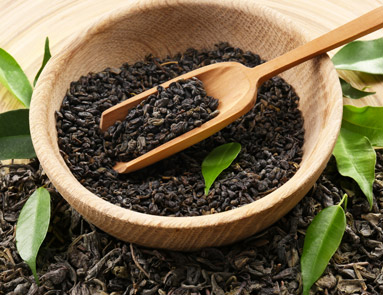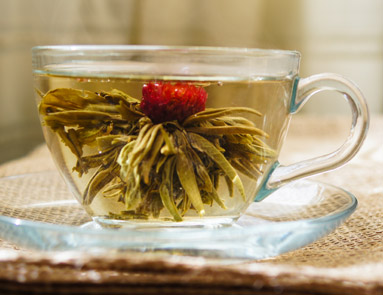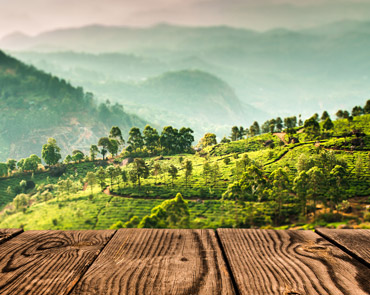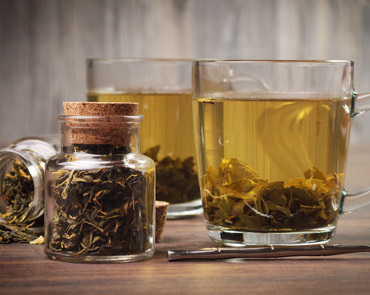Free shipping for orders over $39
- (404)-735-0094
Let's Brew This...!
Discover the flavors from around the world and some of the most popular teas from the Urban Tea Party. To truly understand tea, you need to know what actually constitutes tea. All true teas come from one plant, the Camellia Sinensis. Depending on varying factors such as the time of year harvested, oxidation levels, fermentation and other complex factors, the teas are categorized and processed. Types of teas from the plant are White teas, Green teas, Oolong teas, Pu'erh teas and black eras. Others such as herbal teas, chai and Rooibos (Red) teas are actually tisanes. There are also subcategories within each of these categories, to further make the distinction between different types of tea. Sounds complicated? No worries because the Urban Tea Party is here to guide you to and through your personal and unique journey. Premium Teas from Around the World - From Asia to Africa, India to North America, we have a wide variety of teas that have been made by passionate tea farmers of all different walks of life. From floral hints to the fruity tones you can get a taste of the world in the comfort of your cup.
-
TEAS OF THE WORLDOpen or Close
Explore the world of tea! Learn more about origin countries of various teas

Garden to cup...
Just as every tea has its own unique flavors, every grower has their own unique story. With our collection of Single Source teas, we make it easy for you to learn about the person who grew your tea and what makes it special

Tea Novice to Connoisseur...
Explore a world of flavor without ever leaving the comfort of your favorite chair. Our teas are both an introduction for the tea novice and a journey off the beaten path for the connoisseur. Our tea experts can help to guide you if needed, just shoot us a message and we will be there!
-
TEA APPRECIATIONOpen or Close
Appreciating your tea is the right way to enjoy it to the fullest. Below you can learn more about how different teas are brewed and drunk.
Basic Tea Brewing & Storage
Brewing the perfect cup of tea from loose leaves is simple and straightforward. There is no right or wrong way to make tea. Feel free to experiment and let your palate be the guide. Here are some tips to brewing good...
Green Tea Brewing Tips
A cup of Green tea enchances health. Many customers have asked us about the best way to brew green tea. Whether you are a newcomer to green tea or a long-time green tea enthusiast, we hope our Q&A on...
Iced Tea Brewing Tips
The traditional way to make iced tea is to start with a hot, freshly brewed concentrate. Measure enough tea leaves in a pot or saucepan to make at least a double-strength brew. Pour on boiling...
Cooking With Tea
In many Asian cultures, tea plays an important role in gatherings of friends and family. In China and Japan, guests are usually served a cup of tea upon arrival. Children offer tea to parents on important holidays and couples...
-
TEA CUSTOMS & CULTUREOpen or Close
Every country & nation has their own way of drinking tea. Explore and discover tea culture and traditions.
Tea culture is defined by the way tea is made and consumed, by the way the people interact with tea, and by the aesthetics surrounding tea drinking.
Tea plays an important role in some countries. It is commonly consumed at social events, and many cultures have created intricate formal ceremonies for these events. Afternoon tea is a British custom with widespread appeal. Tea ceremonies, with their roots in the Chinese tea culture, differ among East Asian countries, such as the Japanese or Korean versions. Tea may differ widely in preparation, such as in Tibet, where the beverage is commonly brewed with salt and butter. Tea may be drunk in small private gatherings (tea parties) or in public (tea houses designed for social interaction).
The British Empire spread its own interpretation of tea to its dominions and colonies, including regions that today comprise the states of Hong Kong, India, and Pakistan, which had pre-existing tea customs, as well as regions such as East Africa (modern-day Kenya, Tanzania, and Uganda) and the Pacific (Australia and New Zealand) which did not have tea customs. The tea room or teahouse is found in the US, Ireland and many Commonwealth cities.
Different regions favour different varieties of tea-white, yellow, green, oolong, black, or post-fermented (dark)- and use different flavourings, such as herbs, milk, or sugar. The temperature and strength of the tea likewise vary widely. -
TEA & HEALTHOpen or Close
Tea is the #1 source of antioxidants and elements that are useful for your health.

Health Benefits of Tea
In ancient China, tea was considered an elixir and initially consumed for its perceived medicinal properties. Today, more and more scientific evidence contributes to the belief that tea, indeed, is a healthy beverage. The following provides a summary of the health benefits ass.

A cup of good health
While some brews provide more health advantages than others, there's plenty of evidence that regularly drinking tea can have a lasting impact on your wellness. Put the kettle on, because we're sharing some of the biggest benefits hidden in the world's most popular teas.

Caffeine & Tea
What is caffeine and what effects does it have on the body? Chemically, caffeine is a member of the xanthine family. Caffeine is odorless, has a bitter taste and is highly soluble in hot water. Caffeine occurs naturally in coffee, tea, cocoa, kola nuts and a variety of other...
-
HERBAL & WELLNESSOpen or Close
Herbal tea has been imbibed nearly as long as written history extends. Also known as a tisane or herbal infusion, an herbal tea is simply the combination of boiling water and dried fruit, flowers or herbs. Documents have been recovered dating back to as early as Ancient Egypt that discuss the enjoyment and uses of herbal tea.
-
CHAIOpen or Close
Chai is steeped in a rich history. The name "chai" is actually the Hindi word for "tea", which was derived from "cha", the Chinese word for "tea". In this case, the Hindi term chai means a mix of spices steeped into a tea-like beverage. Recipes for chai vary across continents, cultures, towns and families. But the traditional ingredients of a spiced tea blend usually include black tea mixed with strong spices, like cinnamon, cardamom, cloves, ginger and black peppercorns. The spiced tea mixture is typically brewed strong with milk and sweetened with sugar or honey. However, the milky sweet tea treat we order in coffee and tea shops today has very little in common with the origins of Indian chai.
-
OOLONGOpen or Close
Oolong is neither a black tea nor a green tea; it falls into its own category of tea. Yet an oolong may end up with more black tea characteristics or more green tea characteristics depending on the direction the tea master takes in the processing of the tea.
Oxidation: Black tea is allowed to fully oxidize during processing, giving the tea leaves their dark color and rich malty aroma they're known for. Green tea is barely oxidized at all, so the leaves keep some of their original green leaf color and fresh-picked flavor. Oolong tea falls somewhere in between and is often described as a partially oxidized tea. But oxidation levels in oolong can vary from 8% to 80% depending on the production style of the tea master. Which is why the flavor profile of some oolongs may lean more toward a fresh green tea (less oxidized) and others toward a malty black tea (more oxidized).The biggest difference between oolong tea and black or green teas? Oxidation and shape.
Shape: Oolong teas are traditionally rolled, twisted or curled into tight balls or thin strands. These artisanal shaping techniques depend on the traditions of the tea master making the tea. Rolling is an important aspect of oolong processing that alters the appearance, color and aroma of the final tea leaves. Depending on how and when the leaves are rolled during processing, the tea master can subtly alter the entire direction of the tea's final flavor.
-
THE BLACKSOpen or Close
When people talk generally of tea in Western culture, they're often referring to black tea. Sun tea, sweet tea, iced tea, afternoon tea... these well-known categories of tea are typically made using black tea. Even the popular English Breakfast and Earl Grey blends are made from black tea leaves.
This is in contrast to Eastern culture-in countries like China and Japan - where tea typically refers to green tea. So what's the difference between black and green tea? And how did black tea become so popular in the West?
-
THE GREENSOpen or Close
Green tea is considered to have originated in China's Yunnan province, home to the Camellia sinensis tea plant species. In fact, 260 of the world's 380+ varieties of tea can be found in Yunnan. It is said that even today the word "tea" in China refers only to green tea, not to the general category of tea as it does in the West. While China is one of the top green tea producing and exporting countries, there are different types of green tea grown and produced all over the world, including in Teatulia's own organic tea garden in Bangladesh.
-
THE REDSOpen or Close
While many people are familiar with other common categories of tea, like black tea or green tea, red tea is a lesser-known category of tea that can refer to a variety of different beverages, including black teas grown in China and other Asian countries, as well as herbal teas such as rooibos and hibiscus
-
THE WHITESOpen or Close
White tea is the most subtle of all the varieties of tea, using only the finest tea leaves from each bush with a minimal amount of processing. Considered by most connoisseurs to be the apotheosis of tea, white tea has yet to make a significant impact on Western culture. This will soon change, with new studies showing that white tea is 10% more effective in improving immune health than its Green cousin.
